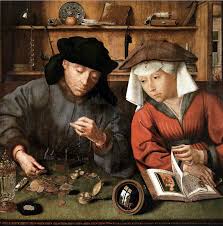The world of modern finance, with its complex algorithms, global markets, and sophisticated derivatives, often feels like a product of the digital age. Yet, many of the fundamental financial tools and concepts we use today are not new inventions. They are, in fact, the result of centuries of innovation, forged in response to historical needs and economic challenges. From ancient civilizations to the bustling markets of medieval Europe, the precursors to stocks, bonds, and insurance were developed out of necessity. These early instruments were the building blocks that allowed commerce to expand, facilitated the management of risk, and laid the groundwork for the global financial system we know today. Understanding their origins provides crucial context for appreciating the long and often surprising history of financial engineering. This article will explore several key financial instruments that were invented centuries ago, tracing their evolution and their lasting impact on modern finance.
Bonds: The Ancient Roots of Debt
The concept of a bond, a debt instrument where an investor lends money to a borrower (usually a government or corporation) in exchange for interest and a promise of repayment, is far from new. Its origins can be traced to some of the world’s earliest civilizations.
A. Mesopotamian Contracts: One of the earliest forms of debt contracts can be found on clay tablets from ancient Mesopotamia, dating back thousands of years. These contracts documented loans of grain or silver, specifying the amount borrowed, the terms of repayment, and the interest. While not a “bond” in the modern sense, they were the first legal instruments to formalize debt and interest, providing a framework for large-scale commerce and lending.
B. Roman Public Debt: The Roman Empire, with its vast public works and military campaigns, pioneered a form of public debt. The Roman government would issue “public loans” from wealthy citizens to fund its expenditures. These loans, known as “publica,” were often backed by the promise of future tax revenues. This system was an early form of a government bond, allowing the state to raise capital for projects and wars on a scale never before seen. The concept of a state guaranteeing repayment of debt is a cornerstone of today’s sovereign bond markets.
C. Medieval City-States: The flourishing Italian city-states of the Renaissance, such as Venice and Florence, refined the concept of public debt. To finance wars and infrastructure, they issued transferable debt certificates, known as prestiti. These certificates could be traded among investors, creating a secondary market for debt. This innovation was a crucial step, as it gave investors the ability to sell their debt holdings before maturity, providing liquidity that made the bonds more attractive and paved the way for modern, tradable securities.
The Joint-Stock Company: The Birth of the Corporation
Before the joint-stock company, business ventures were typically partnerships, where a few individuals pooled their capital and bore unlimited liability. If the venture failed, the partners could lose everything. The joint-stock company changed this, laying the groundwork for the modern corporation and stock market.
A. The Dutch East India Company (VOC): The Vereenigde Oost-Indische Compagnie (VOC), founded in 1602 by the Dutch government, is widely considered the world’s first true joint-stock company. To finance the incredibly risky and expensive long-distance voyages to the East Indies, the company sold shares to thousands of investors. Each investor owned a portion of the company and was entitled to a share of its profits.
B. Limited Liability: A key feature of the VOC and other early joint-stock companies was limited liability. Investors were only liable for the amount of money they invested; their personal assets were protected if the company went bankrupt. This innovation was revolutionary, as it encouraged a much broader range of individuals to invest in risky ventures, providing a massive infusion of capital that fueled global trade and exploration.
C. The First Stock Exchange: To facilitate the buying and selling of its shares, the VOC created the first official stock exchange in Amsterdam. This market, which allowed investors to trade shares freely, was the precursor to modern stock markets like the New York Stock Exchange and the London Stock Exchange. It created liquidity and price discovery, which are essential functions of today’s capital markets.

Insurance: From Maritime Risk to Modern Policies
Insurance, a mechanism for spreading risk and protecting against catastrophic loss, also has deep historical roots, particularly in maritime trade.
A. The Rhodian Sea Law: The concept of sharing risk in shipping dates back to ancient times. The Rhodian Sea Law, a collection of maritime laws from the Isle of Rhodes, included a principle known as “general average.” This rule stated that if a captain had to jettison cargo to save a ship and its remaining cargo during a storm, all the merchants whose goods were on the ship would share the loss equally. This was an early form of collective risk-sharing.
B. Italian Maritime Insurance: The formalization of modern insurance began in the Italian city-states in the 14th century. To protect their valuable cargo ships, merchants would take out policies that paid out if a ship was lost at sea. These policies, often backed by wealthy individuals or groups of merchants, were formalized into contracts that specified the premium, the insured value, and the conditions of a claim. This was a critical step in turning a simple concept of risk-sharing into a structured, commercial business.
C. Lloyd’s of London: In the late 17th century, Lloyd’s of London emerged from a London coffee house. Merchants, ship captains, and insurers would meet there to share information and write policies on maritime ventures. Lloyd’s institutionalized the practice of insurance, bringing together individual underwriters to collectively bear the risk of large ventures. Today, Lloyd’s of London is a global insurance market that underwrites everything from oil rigs to satellite launches, a direct descendant of a group of merchants in a coffee house.
Checks and Banking: The Evolution of Payments
The modern banking system and the use of checks for payment also evolved from practical needs, moving away from the cumbersome practice of carrying large amounts of physical cash.
A. Templar Knights’ Bills of Exchange: During the Crusades, the Knights Templar, a powerful military and financial order, created a system that allowed pilgrims to travel safely with money. A pilgrim could deposit money at a Templar house in their home country and receive a “bill of exchange.” They could then present this bill at a Templar house in the Holy Land and withdraw the equivalent amount, minus a small fee. This system eliminated the risk of being robbed on the journey and was a precursor to modern checks and wire transfers.
B. The Goldsmiths of London: In 17th-century London, merchants and wealthy individuals would deposit their gold with goldsmiths for safekeeping. In return, the goldsmiths would issue a receipt, or a “goldsmith’s note,” which could then be used as a form of payment. These notes were the forerunners of modern bank notes and checks. Soon, the goldsmiths realized that they could lend out a portion of the gold they held, as not all depositors would demand their gold back at the same time. This was the birth of fractional-reserve banking and the power of credit creation.
Conclusion: An Echo of Ingenuity
The financial instruments we take for granted today were not conjured out of thin air. They were the product of a slow, incremental process of innovation, trial, and error over centuries.
A. From Physical to Abstract: The evolution of these tools reflects a broader shift from a physical, tangible economy to an abstract, concept-based one. The bond evolved from a clay tablet to a tradable security. The stock evolved from a share in a specific voyage to a share in a global corporation.
B. The Management of Risk: At their core, these inventions were all about managing risk and facilitating commerce on a larger scale. Limited liability in stocks, the transferability of bonds, and the very concept of insurance were all designed to mitigate risk and encourage investment, which are the primary functions of modern finance.
C. A Foundation for the Future: The institutions we see today—central banks, stock exchanges, and insurance companies—are all direct descendants of these early innovations. The principles of fractional-reserve banking, limited liability, and risk-sharing are the intellectual bedrock upon which the entire modern financial system is built. By looking back at the ingenuity of our ancestors, we gain a deeper appreciation for the complex and dynamic financial world we inhabit today.












